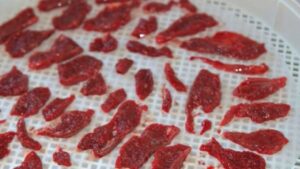Placenta Capsules
Placenta capsules can be an exceptional way to bounce back from postpartum issues. Why is the placenta and the placenta capsules so important and interesting? Let’s take a look.
Interestingly, almost all species of mammal consume the placenta. Many have hypothesized that it’s because the placenta is packed full of nutrition for recovery benefits. There are many ways to consume the placenta, but the placenta capsule form is by far the most popular. We have seen incredibly positive results from women who choose to consume their encapsulated placenta. This is a centuries-old tradition that is finally getting a lot of attention in the United States.
The most common way to digest the placenta is to swallow it in a placenta capsule form. To do this, the placenta is cleaned, separated, and dried. Then it is ground into a fine powder. The product is your nutritious postpartum recovery tool in capsule form ready to be consumed. Please consult your practitioner for dosage.
Examining the Placenta
Before ingesting a placenta capsule, there are some interesting things to consider. There is a long history behind the examination of a placenta. At first glance, the placenta seems like an inactive, mushy lump of flesh. However, it’s far from inactive, Even after its delivered, the placenta lives for a while longer. The umbilical cord continues to pump nutrients from it to the newborn if the cord remains attached. Because of this wonder of nature, many doctors and midwives hold off clamping the cord for a few minutes to get all the benefits of the placenta’s hard work, even after being delivered.
The placenta has been examined even by our great ancestors for uses, and anomalies, even rituals. Midwives in certain regions use the placenta to predict the number of future children the mother will have. Wise men in West Africa will examine the placenta to see into the child’s future. Pathologists will also inspect the organ for clues after a difficult or abnormal pregnancy or labor. Today there are molecular biologists that will examine placentas to see if there’s a connection between certain molecules embedded in the placenta to future behavioral traits that the child might have.
The Placenta Capsule Process
The placenta capsule process should be initiated within a day after birthing your baby. However, if it is kept on ice can be processed at a later date, but preferably in a timely manner as possible.

Placenta ready for dehydration
Next, the umbilical cord is removed from the placenta along with any additional debris. For an additional step of cleaning the placenta is run underwater and is gently massaged. In some cases, the placenta is placed in a food-grade steamer. The placenta is steamed for approximately 20 minutes. At this stage, some prefer to add hers to the placenta. However, when the placenta is encapsulated there is no taste to the placenta capsule whatsoever.
Next, the placenta is separated and cut into slices. The placenta slices are then placed in a food-grade dehydrator. The umbilical cord can also be placed in the dehydrator in order to make an umbilical cord keepsake, which is not necessary but is an option if you prefer.
Now the placenta is finished dehydrating at this stage it is placed in a food processor which will grind it into powder form. We process the powder and encapsulate it into size 00-sized placenta capsules. The placenta capsules are then stored in a sealed glass bottle. Your placenta capsules should be kept in the refrigerator until they are consumed.
Placenta Health
The placenta must be in good health and shape. Anomalies like Accreta or any placenta that went through Pathology cannot be encapsulated.
Ask your midwife about placenta capsules. You can call us anytime, we are glad to help.




